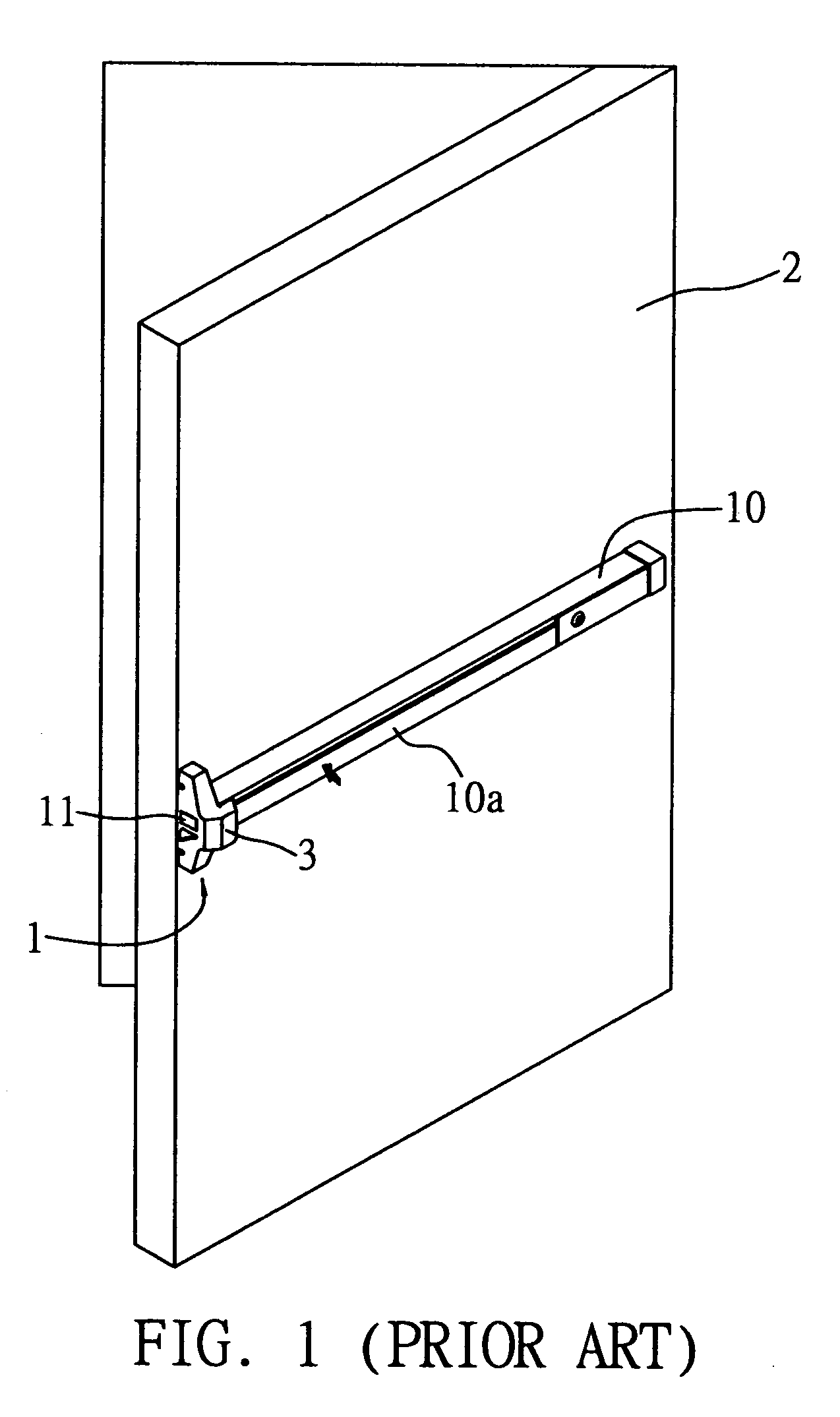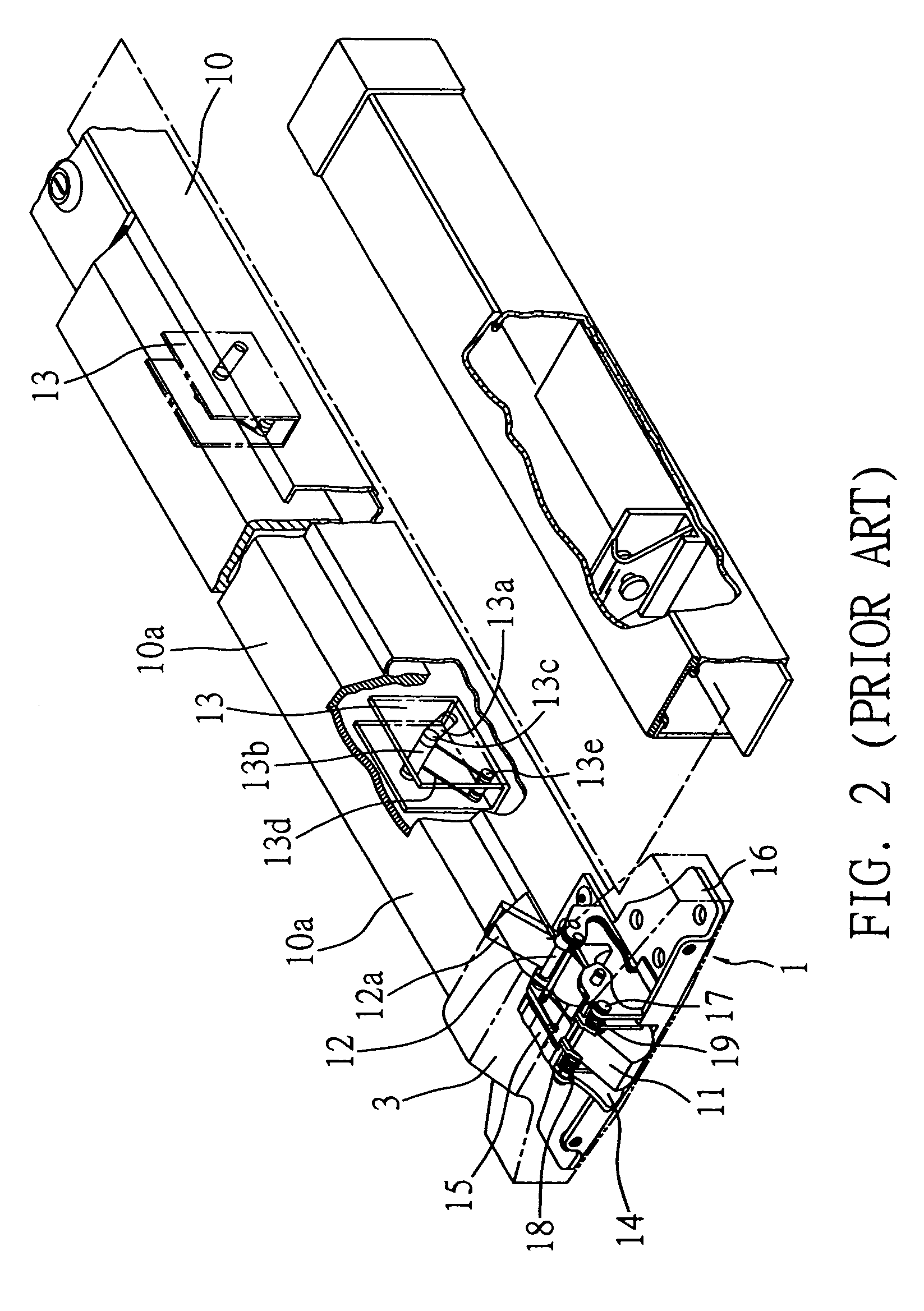Fire-blocking door lock structure
a door lock and fire-blocking technology, applied in the direction of building locks, floor fabrics, constructions, etc., can solve the problems of forming gaps, unable to be completely retracted, and the blocking effect of the door lock could fail, so as to prevent the form of retraction into the latching member
- Summary
- Abstract
- Description
- Claims
- Application Information
AI Technical Summary
Benefits of technology
Problems solved by technology
Method used
Image
Examples
Embodiment Construction
[0033]Referring to FIGS. 4 through 7, a fire-blocking door lock structure according to the present invention comprises a latching member 33 mounted in a lock casing 30 on a fire-blocking door (not shown) and an actuation mechanism 29 installed in the latching member 33. The actuation mechanism 29 comprises a latch body 34, a stop piece 36, a safety latching member 35, a guide rod 43 and an actuating piece 39. The fire-blocking door described in the embodiments of the invention is the same as the conventional fire-blocking door 2 shown in FIG. 1, thereby not further illustrated in the drawings herein.
[0034]The casing 3 is mounted on the fire-blocking door and comprises a push handle 10a and a latch body 34 driven by the push handle 10a. A person can unlatch the door by pressing the push handle 10a that is subsequently forced to contact the actuation mechanism 29. The latching member 33 is coupled to the casing 3 and pivotally connected with the safety latching member 35, the stop pie...
PUM
 Login to View More
Login to View More Abstract
Description
Claims
Application Information
 Login to View More
Login to View More - R&D
- Intellectual Property
- Life Sciences
- Materials
- Tech Scout
- Unparalleled Data Quality
- Higher Quality Content
- 60% Fewer Hallucinations
Browse by: Latest US Patents, China's latest patents, Technical Efficacy Thesaurus, Application Domain, Technology Topic, Popular Technical Reports.
© 2025 PatSnap. All rights reserved.Legal|Privacy policy|Modern Slavery Act Transparency Statement|Sitemap|About US| Contact US: help@patsnap.com



